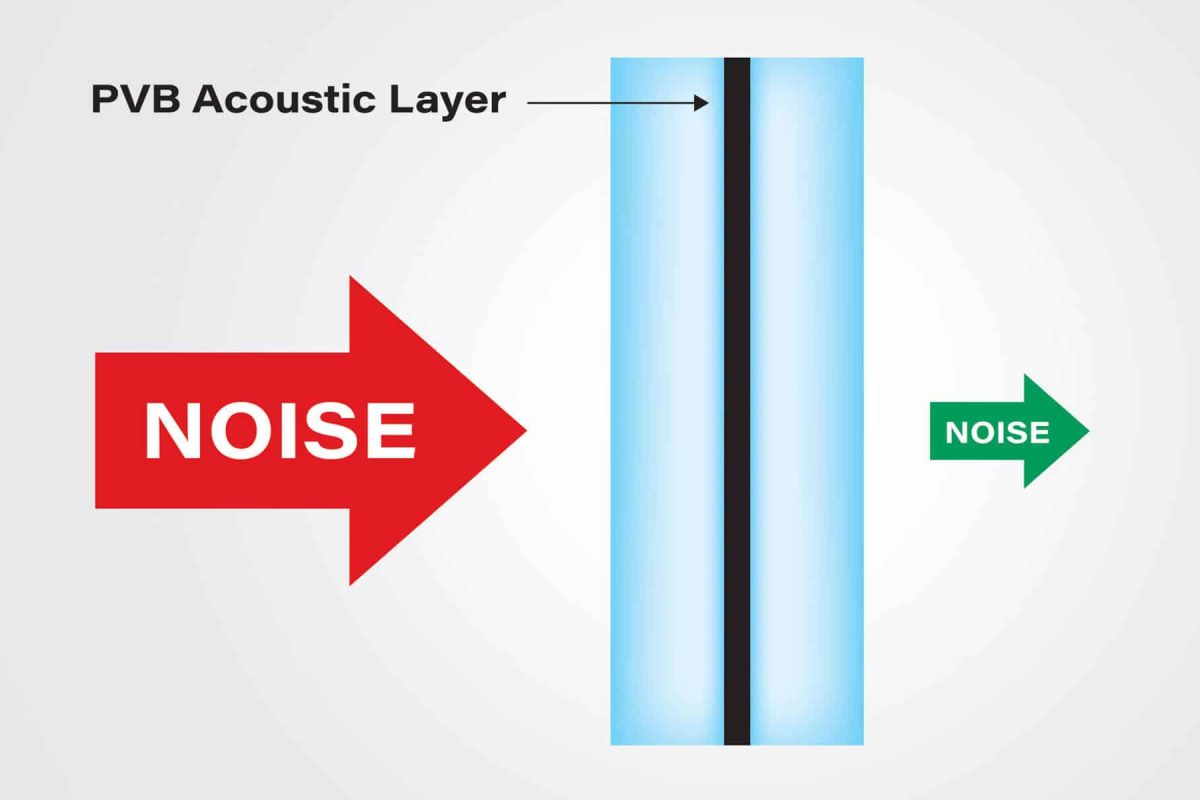New developments in acoustic glazing are helping glassmakers and installers reduce noise pollution, driving greater demand for quieter buildings.
Ellen Rogers, editor of USGlass magazine, is an avowed glass nerd, the kind of tireless industry advocate who checks into a New York City high-rise for an international façades conference and immediately goes to the window — not to enjoy the view, but to check for glass quality.
“I can tell when a building clearly does not have sound control on the glass,” she says. “I was in a hotel one time that was right by some railroad tracks, and I heard the trains all night long! Contrast that with the new TWA Hotel at JFK airport, where they put in glass with seven layers of sound-proofing materials. Guests don’t even hear the planes.”
Acoustic insulation has become an increasingly important consideration in architectural design thanks to rising urbanization, worsening noise pollution, and a greater awareness of the connections between noise exposure and various health issues. In the U.S., hearing loss is the third most common chronic health condition according to the CDC. Installing windows with acoustic insulation can help lower the chances of hearing impairment, hypertension, heart disease, and sleep disturbance.
Some large metro areas like New York City, Los Angeles, and Chicago have begun placing restrictions on acceptable noise levels in their building codes. All this is boosting the market for soundproofing insulation, which is estimated to reach nearly $18 billion by 2027, up from roughly $13 billion in 2020. As a result, the demand for acoustical glazing is also booming.
“Glass is the weakest link in sound control when compared to other building products,” Rogers says. “So one of the first things people look for when constructing a building is laminated glass.”
Brian Leizerowicz, commercial sales director for Western Window Systems, likens laminated glass to the safety glass used in automobile windshields. “You have two lites of glass and a bonded interlayer of polyvinyl butyral (PVB), or other specialty material, sandwiched between them,” he says.
In windshields, that PVB layer prevents glass from breaking up into large, sharp pieces upon impact. “But that interlayer can also help reduce the amount of reverberation that’s transmitted through those panels,” Leizerowicz explains, “because now you’ve got two pieces of glass separated by a plasticized material that deadens the sound. To make it even more acoustically enhanced, you can make the two lites of glass in different thicknesses and increase the air space between them, so that one panel doesn’t reverberate at the same rate as the other. That also reduces the ability of sound to transmit through the glass.”
Acoustical ratings are determined in terms of Sound Transmission Class (STC), which measures noise transmission from room to room, and Outdoor-Indoor Transmission Class (OITC), which measures the transfer of sound from outside to inside. The higher the acoustical rating, the better the sound control. Favorable acoustic ratings fall in the range of 18-20 for single pane windows and from the high 20s to low 40s for double-glazed windows and doors.
Western Window Systems’ Series 7000 Performance Line, which includes sliding, multi-slide, hinged, and bi-fold doors and windows, has received excellent ratings in both STC and OITC, with all products performing between STC 30-38 and OITC 27-33.
“Designers should specify a system that has a low air infiltration rate and also more robust thermal break technology,” Leizerowicz says, adding that the system’s framing also plays an important part in noise reduction. “More robust thermal breaks can help reduce sound transmission by disrupting the reverberation that’s trying to pass from outside to inside by introducing different materials for that sound to try to flow through.”
Leizerowicz advises designers and builders — especially of multi-family and hospitality projects, where some cities are already writing maximum interior noise levels with specified decibel limits into building codes — to pay close attention to acoustic glazing. “Even where it’s not necessarily in the code, people want the higher level of comfort and reduced disturbance from the outside world,” he says. “Quiet has always been highly desirable in buildings. But now the technology to deliver it is really catching up.”

What We Stand For
Exceptional values lead to exceptional work.
Learn More
What Makes Them Great
Designed for indoor-outdoor living.
Learn More
How They’re Made
Built and tested to last.
Learn More

